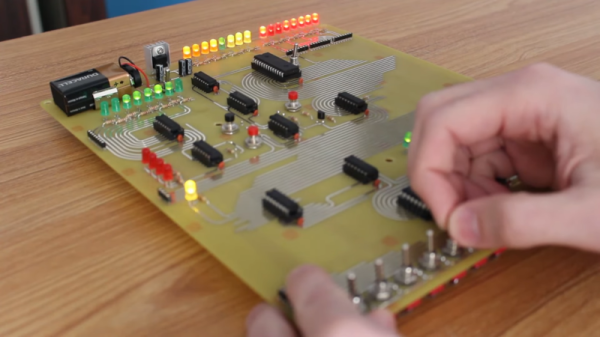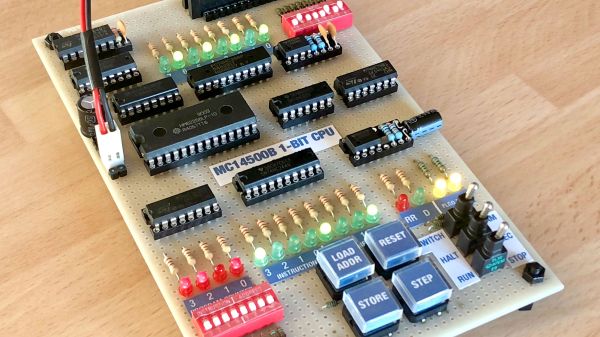While the world has been racing for higher and higher bit counts for CPUs, there are always those that buck the trend. Consider the venerable Motorola MC14500B, a 1-bit CPU, no kidding. [Usagi Electric] built up a computer based on one of these chips using a breadboard but has since pulled it apart to use the breadboard for other things. So this time, he’s made a permanent version on a PCB and created a simple game to show it off. You can see the result in the video below.
Well, the chip had one bit in the datapath. It did not have any memory, but it did have a way to feed it 4-bit instructions, and, as you might guess, there were 16 possibilities for instructions. The chip was meant to replace industrial controllers where even a PLC might be overkill, and apparently, it did see some use in the real world.
Continue reading “Too Cool For 8-bit Retro? Try 1-bit Gaming”













